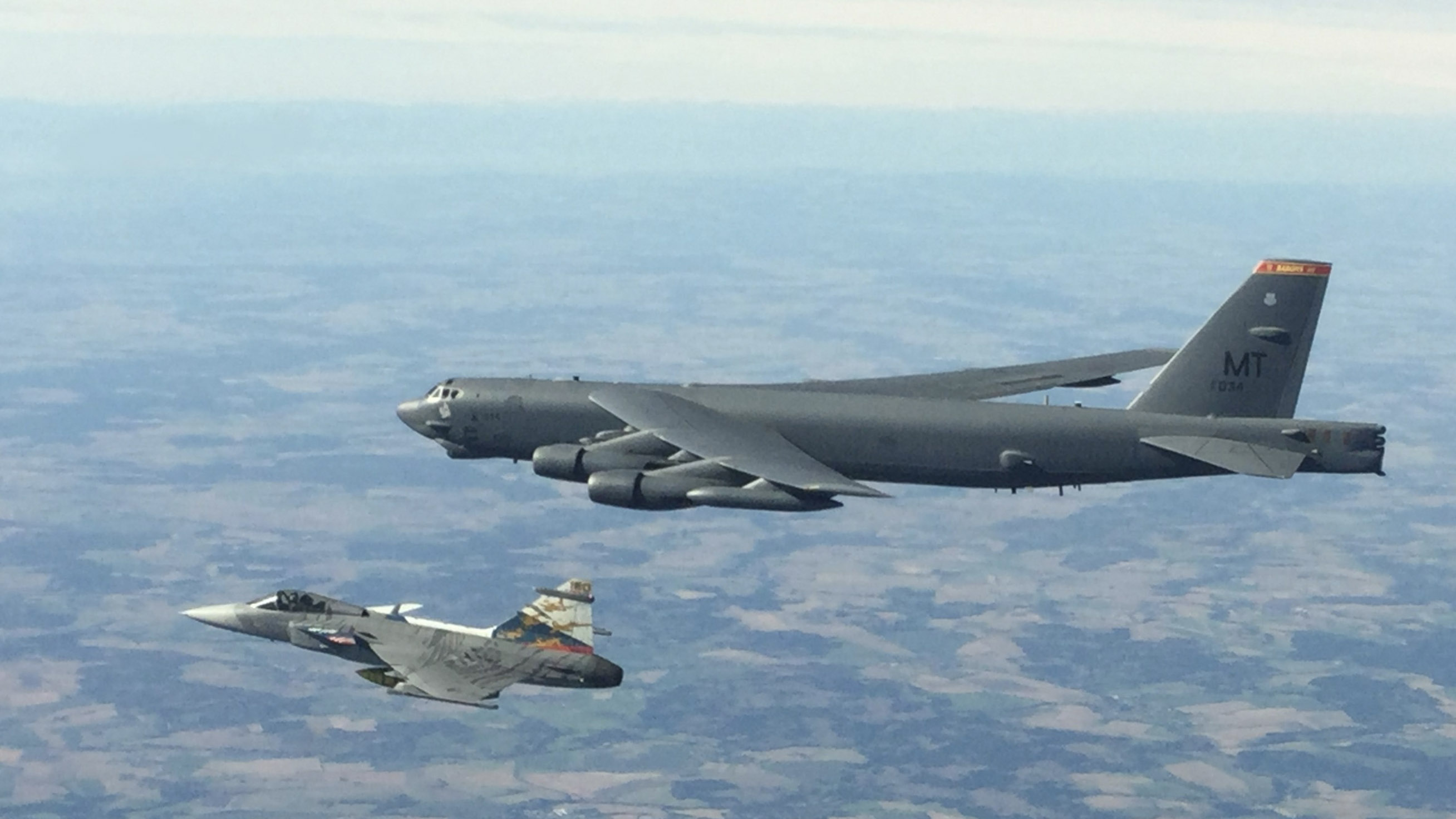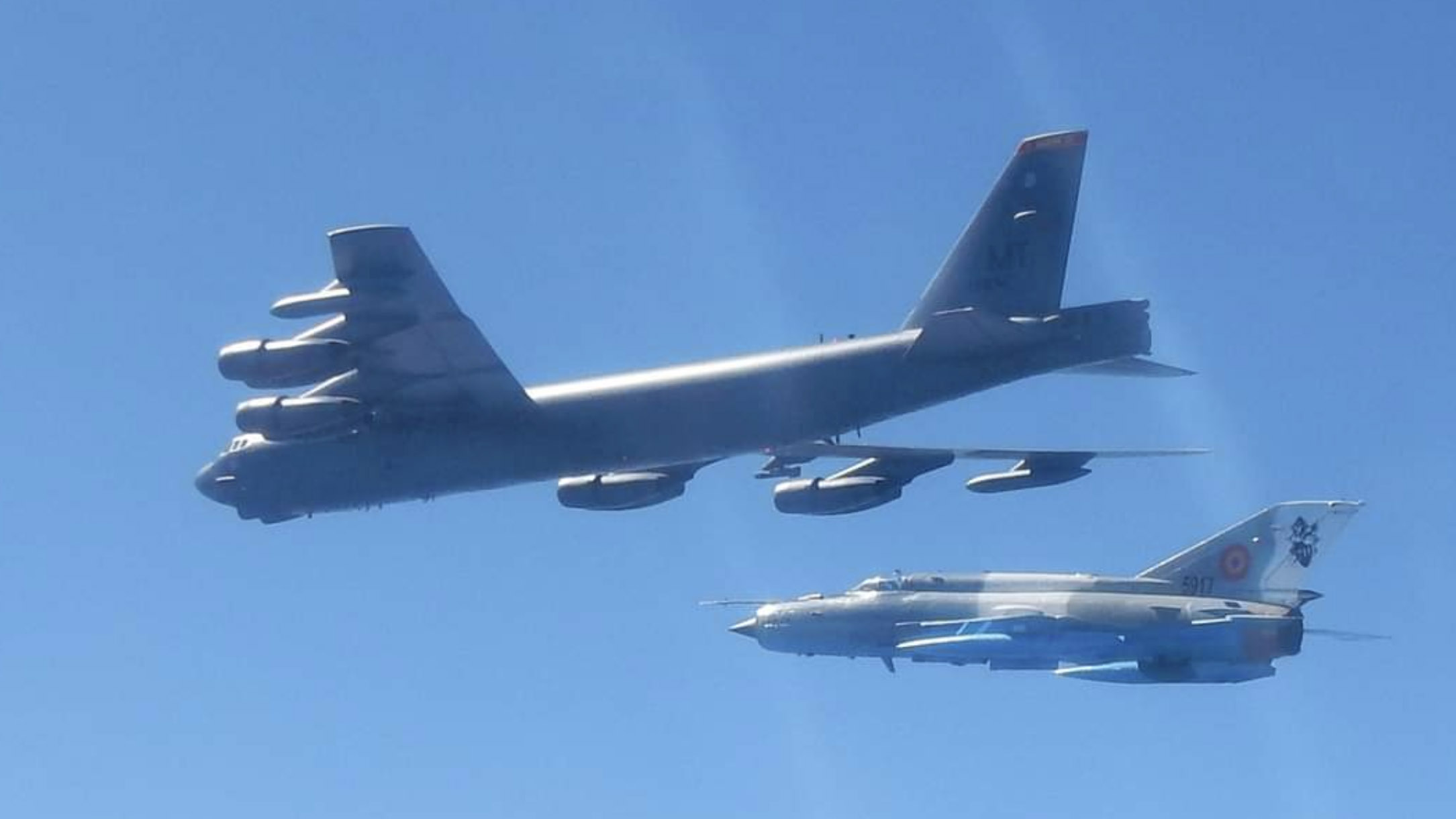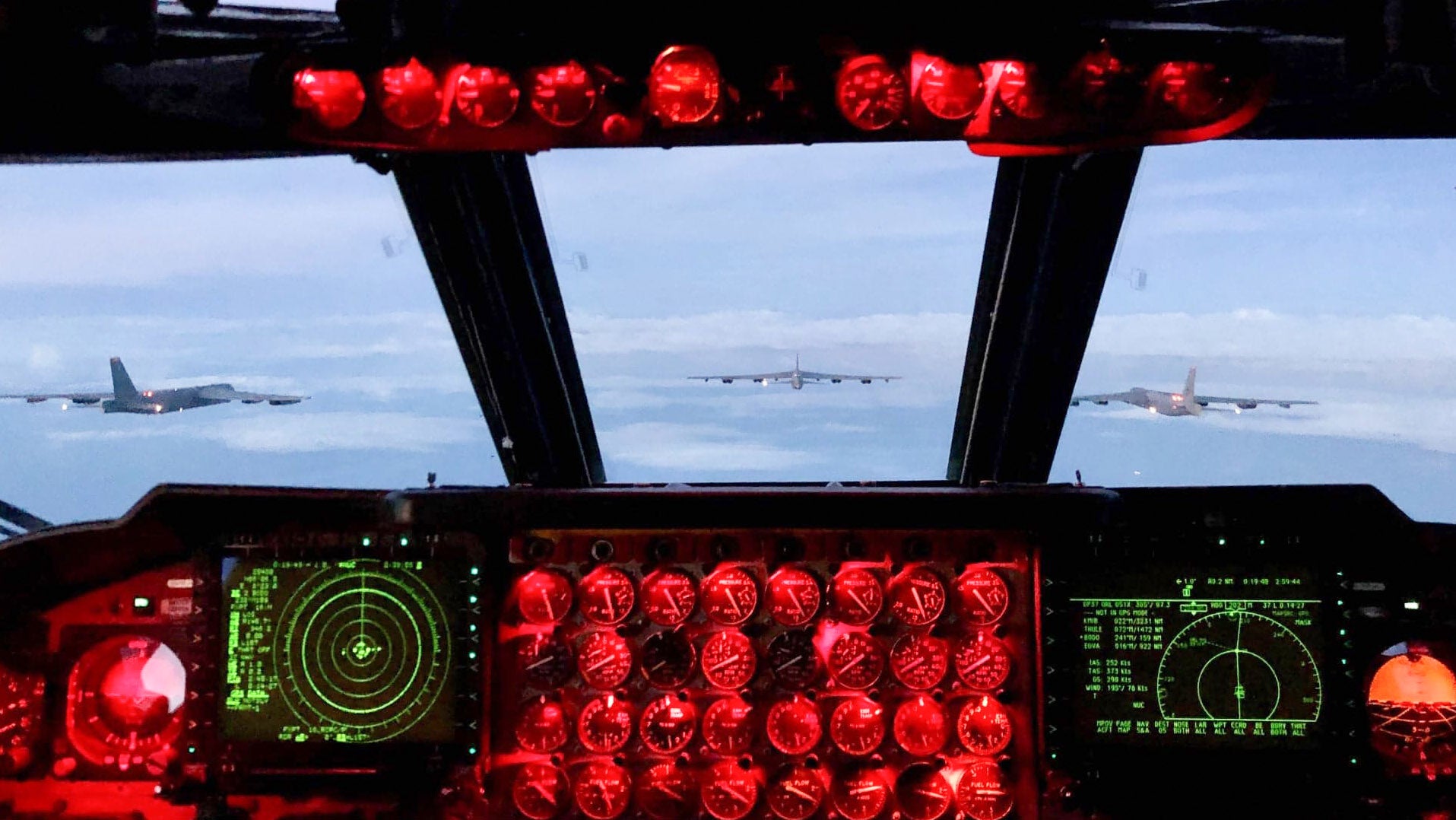In a dramatic demonstration of NATO airpower, six U.S. Air Force B-52H Stratofortress strategic bombers, four in Europe and two in North America, have teamed up with other alliance aircraft to perform overflights of all 30 member nations on August 28, 2020.
The mission, dubbed Allied Sky, is being billed as an extension of the latest regular Bomber Task Force (BTF) deployment to Europe. Currently, six nuclear-capable B-52Hs from the 5th Bomb Wing at Minot Air Force Base, North Dakota are operating out of RAF Fairford in Gloucestershire, England. You can read more about this latest B-52 deployment to Europe in this recent piece of ours.
Since 2018, routine BTF deployments have taken place in the European theater of operations and involve regular coordination between USAF bombers, including B-1s and B-2s, as well as B-52s, and other aircraft — chiefly fighters and air-to-air refueling tankers — from allies and partners. They also provide an opportunity for bombers to train in the European environment alongside other forces on the ground and at sea.
According to a statement from U.S. European Command (USEUCOM), Allied Sky “is intended to demonstrate NATO solidarity, enhance readiness and provide training opportunities aimed at enhancing interoperability for all participating aircrews from the U.S. and NATO allies.”

In order to cover all 30 NATO member nations, Allied Sky made use of two “teams” of aircraft. Four of the six B-52s deployed to RAF Fairford covered the European portion of the mission. For the North American leg of the mission, another pair of 5th Bomb Wing B-52s are operating from their home station of Minot AFB, for flights over the United States and Canada.
The bombers on tour through Europe are working alongside fighters and aerial refueling tankers from other NATO nations, with the various assets meeting up in the skies over each host nation. So far, we have had confirmation of Czech and Hungarian Gripens fighters meeting up with the bombers, as well as Romanian MiG-21 LanceR fighters. Refueling assets have included a Turkish Air Force KC-135R Stratotanker, a type that was used to top up U.S. Air Force B-1 bombers for the first time during training in the Black Sea last May.
The bombers flying over Canada were joined by Royal Canadian Air Force CF-18 Hornet fighters.
In total, approximately 80 NATO fighters are set to participate in the mission and integrate with the bombers came from Belgium, Bulgaria, Canada, Croatia, the Czech Republic, Denmark, France, Germany, Greece, Hungary, Italy, the Netherlands, Norway, Poland, Portugal, Romania, Slovakia, Spain, Turkey, and the United Kingdom.

With so many assets from different nations operating as part of a complex mission, Allied Sky is clearly a huge undertaking and one that offers an unprecedented opportunity to demonstrate and test the interoperability of NATO air arms, as well as the alliance’s command and control procedures. These capabilities could be called upon during a major conflict in Europe, or elsewhere, where the alliance would act together on a large scale.
A show of strength and solidarity is particularly important at the moment given the strains that NATO is under. Recent diplomatic cracks in the alliance have included President Donald Trump’s war of words on Germany in particular due to its lack of investment in NATO, and the Trump administration’s general claim that member countries are not paying their way when it comes to collective defense.
“U.S. security commitments to the NATO alliance remain ironclad,” explained General Tod Wolters, the EUCOM commander. “Today’s Bomber Task Force mission is another example of how the alliance sustains readiness, improves interoperability and demonstrates our ability to deliver on commitments from across the Atlantic.”

The six B-52s now at RAF Fairford arrived at the base on August 22, when it was noted that — unusually — all were apparently in a nuclear-capable configuration. Earlier BTF missions usually involved a mix of conventional and nuclear-capable Stratofortresses.
“BTF missions are long-planned and not in response to any current political events occurring in Europe,” EUCOM stated, but Allied Sky does come at a time of particularly strained relations between Russia and the West.

Since arriving in Europe, the B-52s have taken part in high-profile maneuvers with Royal Norwegian Air Force F-16s and F-35As off the coast of Norway. The same country has seen recent activity by the U.S. Navy’s secretive submarine USS Seawolf. In an unusual move — perhaps tailored to send a message to Moscow — the U.S. Navy released a number of pictures of the nuclear-powered attack submarine surfaced in a fjord near Tromsø.
Then there’s the situation in Belarus, where demonstrations opposing the country’s authoritarian President Alexander Lukashenko show no sign of diminishing. Lukashenko has stated that he expects Moscow to help ensure his country’s security if required, but there’s little indication of what this support might consist of — providing Russia does indeed decide to come to his aid.

President Lukashenko has already tried to use the presence of the U.S. Air Force F-16s in Poland as evidence of NATO forces “massing” on his country’s border. “It is not clear what they are carrying on their hardpoints… maybe nuclear weapons,” Lukashenko said, according to reports in the Russian media.
Currently forward deployed to Poland — which neighbors Belarus — are 18 F-16s from the U.S. Air Force’s 52nd Fighter Wing at Spangdahlem Air Base, Germany. The fighter jets are participating in bilateral training with the Polish Air Force under a regular Aviation Detachment at Łask Air Base.
Although Allied Sky is thought to be a one-off event, it’s almost certain that NATO will continue to use the Bomber Task Force deployments to Europe to signal the alliance’s unity. It’s also a powerful means of demonstrating the U.S. Air Force’s airborne nuclear deterrent to would-be foes.
UPDATE: 3:05pm EST
Russian Air Force Su-27 Flanker fighter jets apparently intercepted at least one of the B-52s flying through Europe today as it passed through the Black Sea.
A more complete look at the bombers’ flight path as seen on flight tracking software is also now available through ADS-B Exchange.

Contact the author: thomas@thedrive.com
